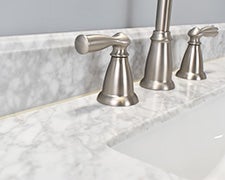Caulking your bathroom or kitchen is a fundamental home maintenance task that serves as a protective barrier against water infiltration, ensuring the longevity of your bathtub, sinks, countertops and the surrounding areas. Whether you're a seasoned DIY enthusiast or a first-time caulker, this step-by-step guide covers everything you need to know about caulking your tub, from removing old to installing new.
Don’t know which caulk to choose? Checkout our blog on How to Choose the Right Caulk or Sealant.
What You'll Need For This Project
- Putty Knife or Razor Knife
- Rag or Towel
- Rubbing Alcohol
- Hercules Plumbers Caulk
- Caulking gun
- Utility knife
- Painter's tape
- Smoothing Tool
Step 1. Remove old caulk.
If you have old or moldy caulk, follow Steps 1-2 for how to remove caulking. If you are starting fresh, skip to Step 3.
Using a putty knife or razor knife, carefully cut and scrape away the old caulk.
Note: Be careful not to damage the finish.
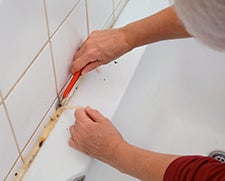
Step 2. Clean the area.
Remove any remaining residue with rubbing alcohol to ensure optimal adhesion.
Note: New Caulk will not adhere to any remnants, so ensure all remaining caulk is cleared.
Step 3. Prep the area.
Prep the area by cleaning any dirt or residue with a rag and a disinfecting spray. Ensure the surface is completely clean and dry before moving on to the next step.
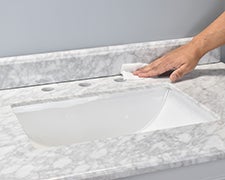
Step 4. Cut the nozzle at a 45-degree angle.
Cut the tip of the caulk tube 1/8th inch wider than the bead of the caulk you want. Make sure you cut at a 45-degree angle.
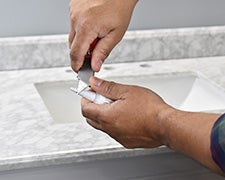
Step 5. Apply the caulk.
If using a caulk gun, use both hands and put your dominant hand on the trigger, while the other hand holds the caulking gun in place. If you are using the tube by hand, hold it at the same 45-degree angle.
Tip: Choose whatever method you prefer to gain easier control.
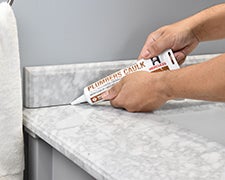
Make sure the tip of the nozzle is positioned into the gap. Then, apply consistent pressure to the trigger or the tube, steadily pulling the tip of the nozzle along the gap until filled. Make sure to apply the caulk from top to bottom if you are caulking a vertical gap.
Tip: If you’re not comfortable with free handing the caulk line, first apply blue painter’s tape on both sides of the area where you will be applying, leaving the gap you want.
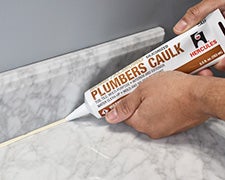
Step 6. Smooth the bead of caulk.
Next, use a smoothing tool or your finger to push the caulk into the gap and create a straight line. Caulk and smooth in small sections, one at a time, and be sure to wipe the smoothing tool off after a couple of uses. Once smoothed, take a wet cloth to clean up any mistakes.
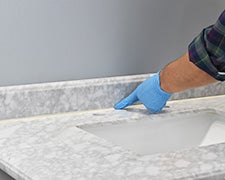
Step 7. Wait until the caulk has cured.
Most types of caulks need approximately 24 hours to cure completely and a minimum of eight hours before exposing it to water or moisture.
Once the caulk is completely cured, you are free to use your room!
